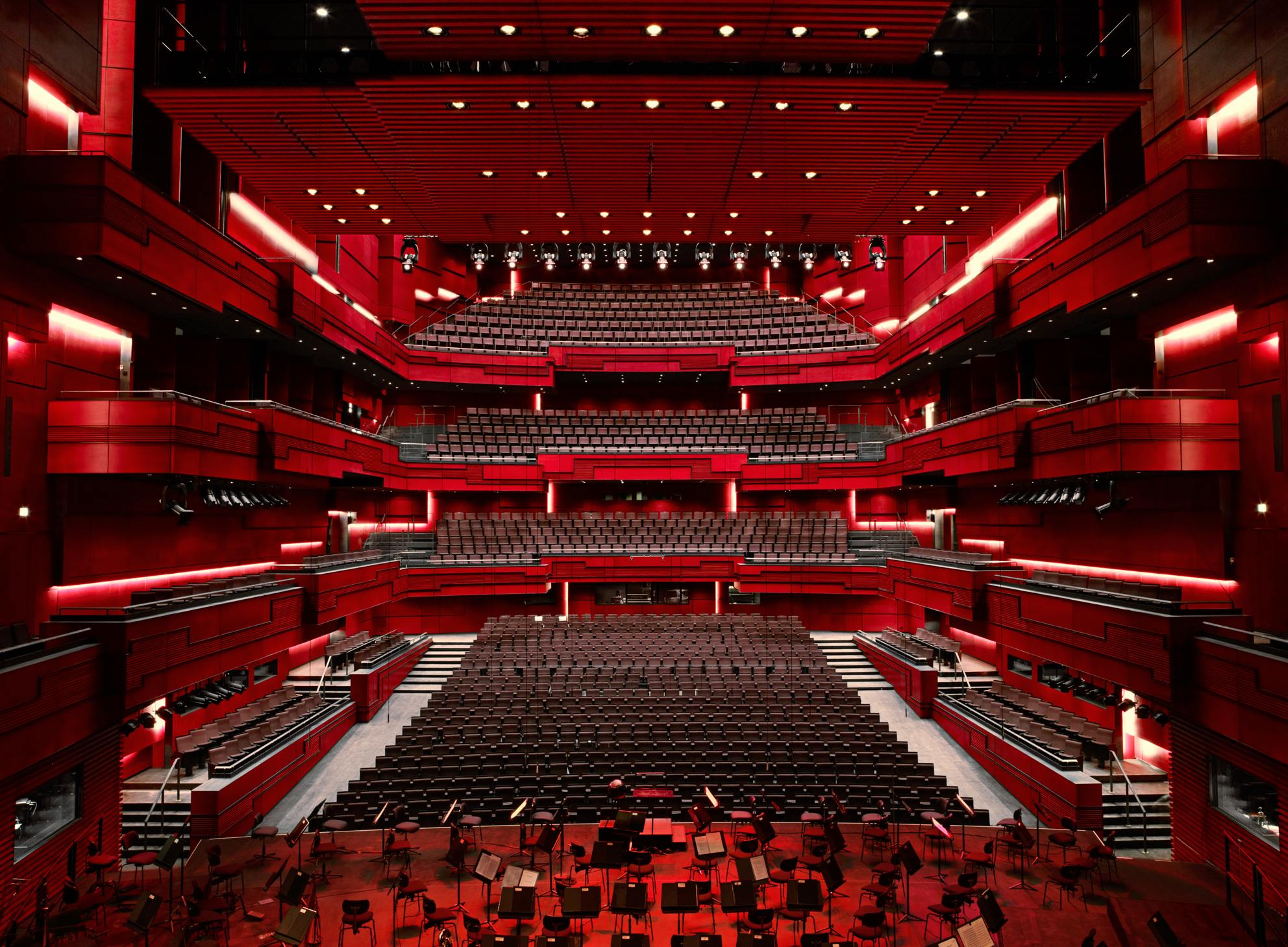Iceland Symphony Orchestra Dark Music Days – Reykjavík, January 26.

It was cold and certainly dark when the opening concert of the Dark Music Days (Myrkir Músikdagar) took place in end of January in Reykjavík. The concert was the Iceland Symphony Orchestra’s contribution to the festival at their “home” concert hall Eldborg in Harpa. The orchestra offered a selection of works, all of which were premiering in Iceland, under the firm direction of the newly appointed chief conductor of the Iceland Symphony Orchestra Ilan Volkov.
First to be heard was Hymnos (1963) by the Italian composer Giacinto Scelsi. It is Scelsi’s largest work and despite his long career and the increasing interest for his works in the last decades, it was the first time the Iceland Symphony Orchestra performed any of his works. What first caught the eye was the untraditional seating arrangement on stage, due to the piece being composed for two orchestras that sat opposite each other, with organ and percussion in the center. Hymnos could perhaps be described as a search for the “correct” tone and the tone material, mainly focusing on d. It goes through constant micro transformations and the sound shifts between the two orchestras.
Volkov had anticipated that the concert would not be sold out (the hall has place for as many as 1800 spectators) and took the opportunity to offer guests to find themselves new seats and repeated the work. This offered guests a new perspective on the orchestra and perhaps a better view of the composer’s play of sound within the orchestra. This generous offer from the orchestra and conductor was due to the fact that it would be unlikely for guest to have the opportunity to hear the piece again in their lifetime.
After the interval the remaining four pieces were played, this time only once through. The first work was Mani (2011)by the Icelandic composer Atli Ingolfsson. Here again the music became somehow visible and from the auditorium it seemed glittering with its delicate glissando and tremolo. The strings began a mystical dialogue that became more concrete as the wind joined in. A firm rhythm appeared which resembled bells and at the climax the orchestra had turned into a bell-ringing machine.
Orkestur (Orchestras) (2011) by another Icelander, Hugi Guðmundsson, was commissioned by the orchestra and Harpa. The architecture of the building controlled the form of the work and the two movements, titled “See-through” and “Solid”, represent the outside glass veil and the contents inside the house. Here, another glittering beginning, as xylophone, harp and piano play short scales over longer notes of the orchestra. The material is developed and is moved around different tone centers. The low instruments of the orchestra keep the whole thing together by repeating a deep note in a rather obtrusive rhythm. The opposites of glittering scales and long notes are further developed through various instrumentations, perhaps inviting listeners to appreciate the different aspects of the see-through structure created.
The second movement begins with a much fuller sound, representing the solidness. Here the musical material is similar, a play with alternating scales and long tones, and the orchestra builds up to a tension filled atmosphere. As previously, the low instruments drive the work with repeated notes. Playfulness is never far a way and even in the darkest places Guðmundsson employs dancelike rhythms to entice the audience into the complex structure of the piece.
Another older work, Metastasis (1954) by the Greek composer Iannis Xenakis was next on the program. As the work began various sounds from the orchestra create an interesting sound mass. The mass kept moving around until it was interrupted by a dialogue between solo strings. The orchestra experimented with various effects and ideas and it is perhaps understandable that the work was not well received first when it was performed. Despite being the oldest piece in the program it still sounds modern and from this example it is clear that Xenakis was ahead of his time.
Hans Abrahamsen’s Ten Sinfonias, which the composer views as a version of an older work, String Quartet nr. 1: 10 Preludes from 1973, was the final work in the program. The title, Sinfonias, comes from the baroque era and means a short instrumental overture. The connection to the baroque era is somewhat a mystery at the very atonal beginning. Many different styles appear in the piece and it is not until the end where Abrahamsen concludes with a movement, which could best be described as a typical baroque sinfonia.
All the pieces formed a well-balanced and interesting program that gave an example of how diverse new music for orchestra can be. The work performed were very different but somehow matched well together and formed a good whole. It offered guests insight into new Nordic pieces and works, which can be considered as modern classics that nonetheless are not performed often. The overall sentiment of the concert, the mystical, even magical atmosphere created with some playfulness suited well the Dark Music Days festival.
Þorbjörg Daphne Hall
Swedish version of this article.
Read also about the concert with Anna Thorvaldsdóttir at Dark Music Days (Swedish).
More about the festival Dark Music Days in Reykjavík in the next issue of Nutida Musik.
